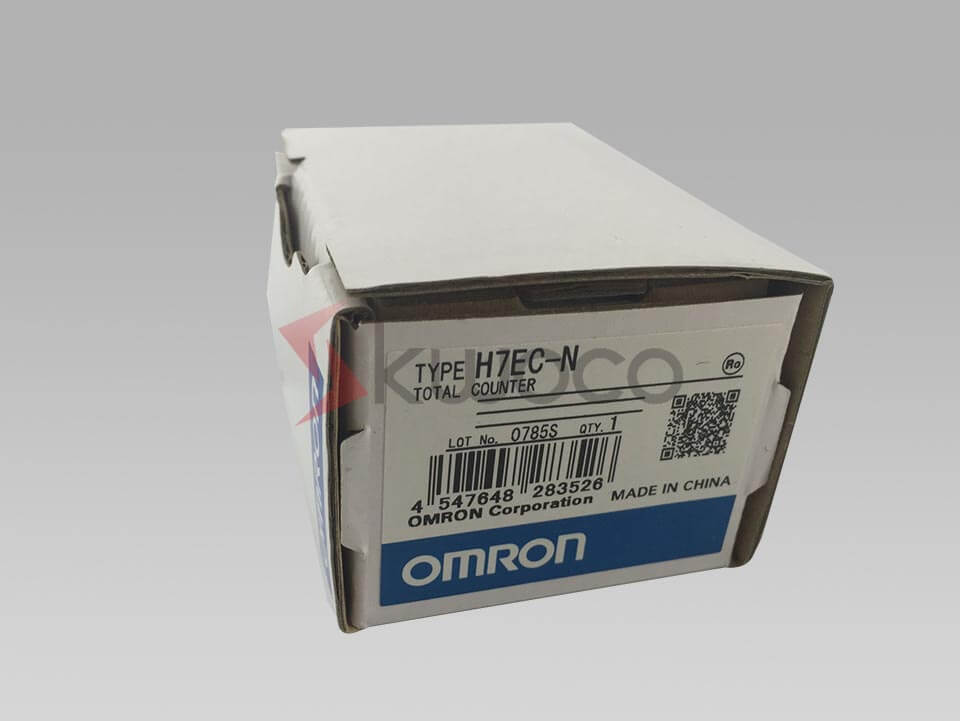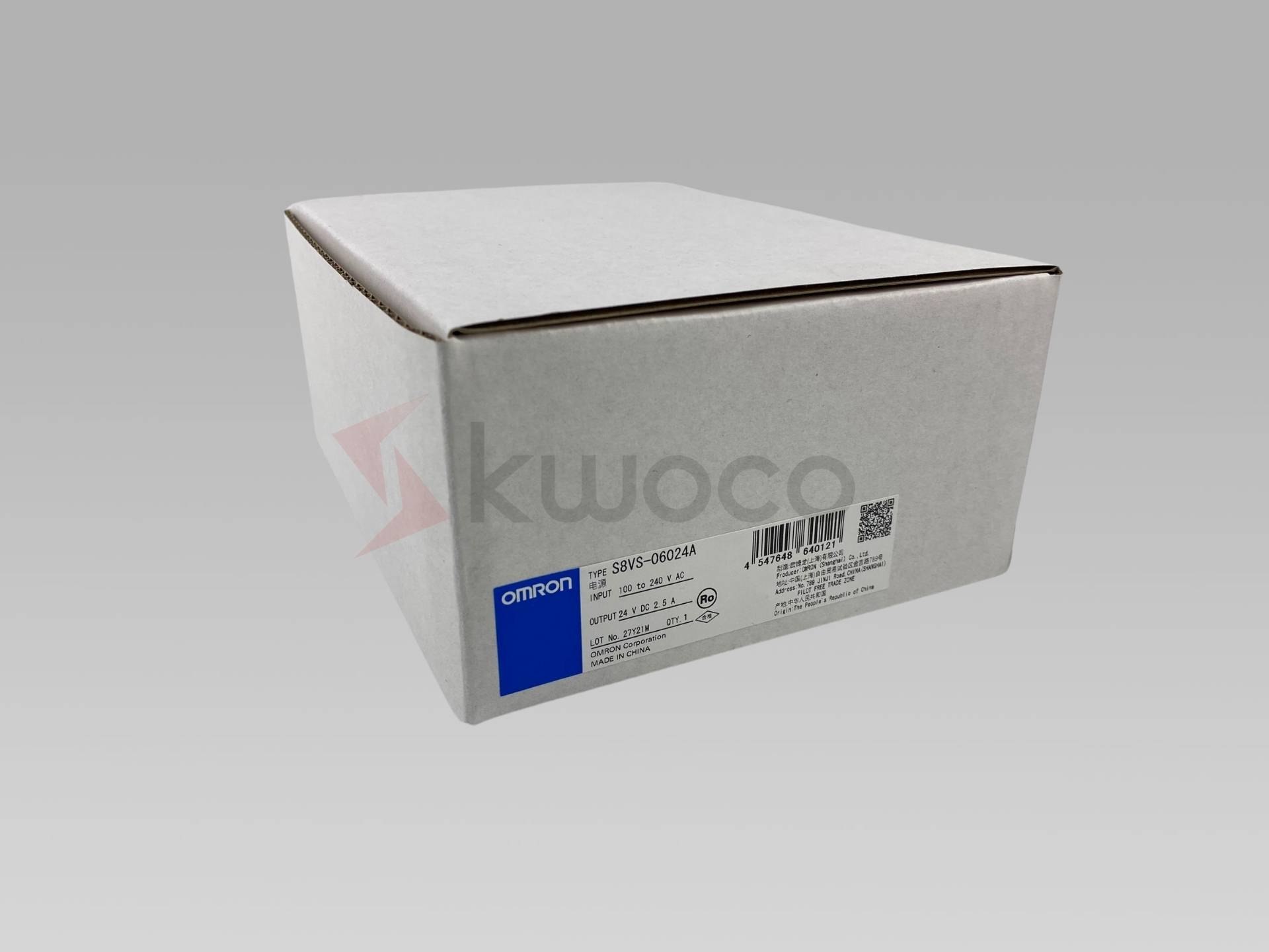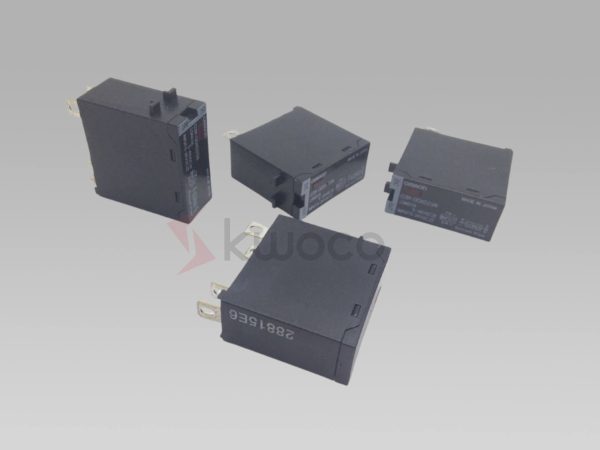Key Features and Technical Specifications
Designed for reliability and ease of use, the G7TC series significantly reduces wiring time and minimizes potential errors, making it an invaluable component in modern automation systems. If you’re looking to optimize panel wiring space and enhance maintainability, the G7TC-OC16, operating on a standard 24VDC coil voltage, is an excellent choice. It offers a clean interface, dependable performance, and the quality assurance associated with the Omron brand.
| Specification | Detail |
|---|---|
| Model | G7TC-OC16 |
| Manufacturer | Omron |
| Product Type | I/O Relay Terminal Block |
| Number of Points | 16 points (Output) |
| Relay Type | Socket-mounted G2R-1-S SPST-NO relays (standard) |
| Rated Coil Voltage | 24VDC |
| Rated Load (Resistive) | Typically 5 A at 250 VAC / 30 VDC (Check specific G2R relay datasheet) |
| Load Terminal Type | Screw Terminals |
| PLC Connection | Via Connector (e.g., Fujitsu, MIL - check specific model documentation) or direct wiring terminal |
| Mounting | DIN Track |
| Indicators | LED status indicator for each relay |
| Coil Surge Protection | Built-in Diode (common) |
| Operating Temperature | -25°C to 55°C (typical, non-freezing) |
Simplify Your Control Panel Wiring with the G7TC-OC16
Tangled wires and complex terminal layouts can be a nightmare in any control panel. The Omron G7TC-OC16 is specifically designed to combat this issue. By consolidating 16 relay points into a single, compact unit, it dramatically reduces the amount of point-to-point wiring required. This item effectively minimizes clutter, making troubleshooting and maintenance far easier. Think about the hours saved tracing individual wires – the G7TC replaces that complexity with a straightforward, organized interface.
This product acts as a perfect bridge, translating control signals from your PLC into switched outputs for driving loads. Its organized layout, with clear labeling and dedicated terminal points for each signal and coil connection, ensures accuracy during setup. Reducing wiring complexity not only speeds up installation but also significantly lowers the risk of miswiring, a common source of faults in industrial automation systems. The robust construction ensures reliable performance even in demanding environments.
Furthermore, the G7TC-OC16 often utilizes standard connectors (like MIL or Fujitsu, depending on the specific sub-model chosen) for the PLC connection, allowing for a single cable interface. This plug-and-play approach further accelerates the setup process. Integrating this Omron relay terminal into your system means cleaner panels, faster commissioning, and more reliable operation.
Fast and Easy Connection for PLC Output Signals
Getting your PLC outputs connected to field devices quickly and reliably is crucial. The G7TC-OC16 excels here. The screw terminal blocks provide secure connections for load wiring, accepting a range of wire gauges commonly used in industrial settings. The clear separation between the coil terminal side (interfacing with the PLC) and the contact terminal side (connecting to loads) prevents confusion and speeds up the wiring process.
Many variations within the G7TC family offer options like push-in terminal blocks, which can further accelerate wiring – simply prepare the wire and push it in for a secure, tool-free connection. This fast connection method is particularly beneficial in high-volume production environments or during time-sensitive maintenance. The integrated LED status indicators for each relay provide immediate visual feedback on the operational state, aiding immensely during commissioning and troubleshooting.
For the PLC side connection, using pre-fabricated cables designed for the specific connector type (if applicable to your model) drastically reduces wiring time and eliminates potential errors associated with terminating multiple individual wires. This combination of features ensures that connecting your control signals is both fast and foolproof. Explore our range of Omron PLC units that pair perfectly with these terminals.
Space-Saving Design: A Key Product Feature
Real estate inside a control panel is always valuable. The Omron G7TC-OC16 boasts a compact footprint, allowing you to fit more I/O points into a smaller space. Mounting directly onto a standard DIN rail, this relay terminal block integrates seamlessly with other panel components like circuit breakers, power supplies, and the PLC itself. Its slim profile helps maintain airflow and accessibility within the enclosure.
Compared to using individual relay sockets and wiring each one separately, the G7TC offers significant space savings. This is particularly advantageous in complex machines or systems where panel size is constrained. The consolidation of 16 relays, their sockets, coil surge suppression (often built-in), and terminal blocks into one unit simplifies the entire layout and reduces the overall panel dimensions required for your control system.
This efficient use of space not only potentially reduces the cost of the enclosure but also makes the entire panel wiring layout cleaner and more manageable. A well-organized panel is easier to understand, quicker to modify, and safer to work on.
Omron G7TC-OC16 Product Datasheet
Frequently Asked Questions
The G7TC-OC16 typically uses Omron’s G2R-1-S SPST-NO relays installed in sockets, allowing for easy replacement if needed. Always verify the specific relay model installed or compatible with your unit.
It usually connects via a dedicated connector (like Fujitsu or MIL type, depending on the exact model variant) using a pre-fabricated cable, which plugs directly into the PLC’s I/O module connector. Some models might offer screw terminals for direct wiring.
Most G7TC models, including the standard G7TC-OC16 (24VDC version), have built-in diodes for coil surge suppression, eliminating the need for external components for this purpose.
The primary benefits are significantly reduced wiring time, minimized wiring errors, considerable space savings in the control panel, easier maintenance due to socketed relays and LED indicators, and simplified connection via multi-core cables.
Related Product
B557,South Pearl Building,Sanlian Road,Longhua,Shenzhen,China
- +86 755 81481609
- [email protected]
- www.kwoco-plc.com
Company
Information
Ask For A Quick Quote
*we respect your confidentiality and all information are protected.




